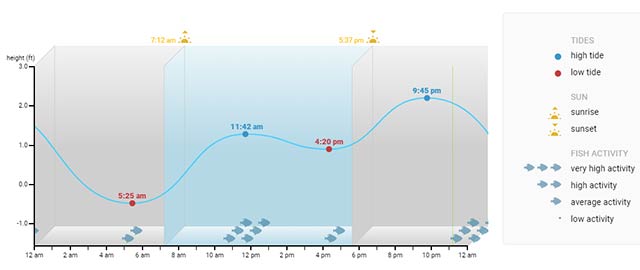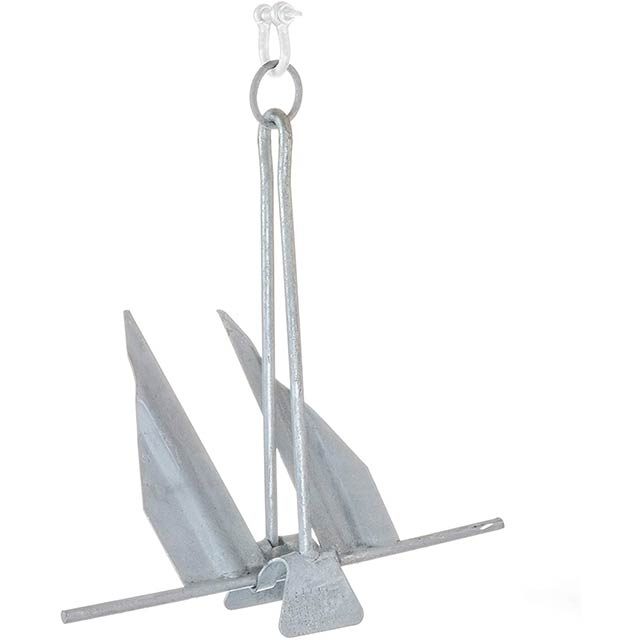Anglers can target snook many different ways and in many different areas. One excellent place to target snook, especially during the summer, is in inlets and passes.
During the hot, summer months, snook prefer cool, moving water. They stack up in large number in the inlets where water is constantly flowing and the bait is plentiful.
If anglers time their outings correctly, they can take advantage of these feeding snook and load the boat.
Pay Attention to Tides
The key to catching snook in inlets and passes is to pay attention to the local tides.

Anglers should always make sure to plan a snook outing during a strong incoming or outgoing tide.
When staged in inlets, these hungry fish tend to bite better when there is a lot of water flowing quickly through that inlet.
Best Snook Tackle
As far as tackle goes, anglers need hefty tackle when targeting snook in inlets. A large, heavy, 7” spinning rod, paired with a 5000 or 6000 sized reel that is spooled with 30-50 pound braided line. A short, 40-50 pound fluorocarbon leader should then be tied to the mainline braid to help disguise it. This setup might seem too heavy, however, when battling a giant snook with all kinds of structure and debris to break off on, the heavier your gear, the better.
Water flows fast in inlets and passes, so anglers are going to need large weights to keep their baits in place on the bottom. A 1-2 ounce egg weight will usually get the job done, depending on the speed of the current. If using live or cut bait, anglers should use a large 3/0 to 5/0 circle hook, depending on the size of the bait.
Bait Selection
Anglers can use either artificial lures or live bait when targeting snook in inlets and passes.
However, live or cut bait is always a better bet. Some of the best options include live
- greenbacks,
- mullet,
- sardines,
- pinfish, and
- grunts.
Live bait is the best choice, but it you can’t access live bait, then any type of cut bait is a secondary option backup.
If live bait is unavailable, good artificial lure options include bucktail jigs and large paddle tail swimbaits. Usually, the heavier the lure the better when fishing inlets. Anglers need a bait that will reach the bottom in a strong current, so a 1 to 2 ounce bait or heavier is best.
Anchors
When fishing snook in inlets and passes, anglers should always have an anchor onboard. An anchor is key in being able to stay in once place and present you bait the proper way to the fish.

If anglers don’t have an anchor, they can allow their boat to drift down the inlet as they fish. This technique will work from time to time, however, a good anchor just makes it easier to fish without having to reposition the boat every five or ten minutes.
When choosing an area to anchor their boat to fish, anglers should focus on places along the jetty that lines the inlet. This rocky structure is where most of the snook usually hang out and wait on passing prey. Anglers can also often spot the shadows of snook that are schooled up on the bottom along rocks.
When anchoring, it’s important to position your boat ahead of the fish, so that your bait will drift back to them. Anglers shouldn’t be directly on top of the fish because they won’t be able to present their baits properly.
Once anchored up and baits are in the water, anglers must play the waiting game. Sometimes snooks are quick to start biting. However, they oftentimes taken a little time to fall victim to a bait or lure, so anglers much be patient.
You Don’t Need a Boat to Catch Snook
Anglers don’t necessarily need a boat to target these inlet snook. Many anglers often fish from shore, off the inlet’s jetty rocks. Snook can be caught this way, it’s just much harder to land them.
When fishing in inlets and passes, anglers have a chance at hooking into some huge snook. It’s not unusual to hook a fish over forty inches.
However, landing these beasts is a whole different story. Anglers will often battle these powerful fish for up to half an hour before landing them, and that’s if their tackle holds up!
That’s why it is so vital to have the proper tackle and equipment when targeting giant snook in inlets and passes.
Back to You
So, the next time you head out to target inshore species this summer, be sure to drop a few baits in a nearby inlet. You might be surprised at some of the snook you’ll put in the boat.

I just love these videos! What a great fishing team you have. I think Brandon actually kissed that fish-I heard a loud smack. LOL
They sure are pretty fish and the water is so pretty too. I love the gentle release technique-you’re the best!
XOXOXO